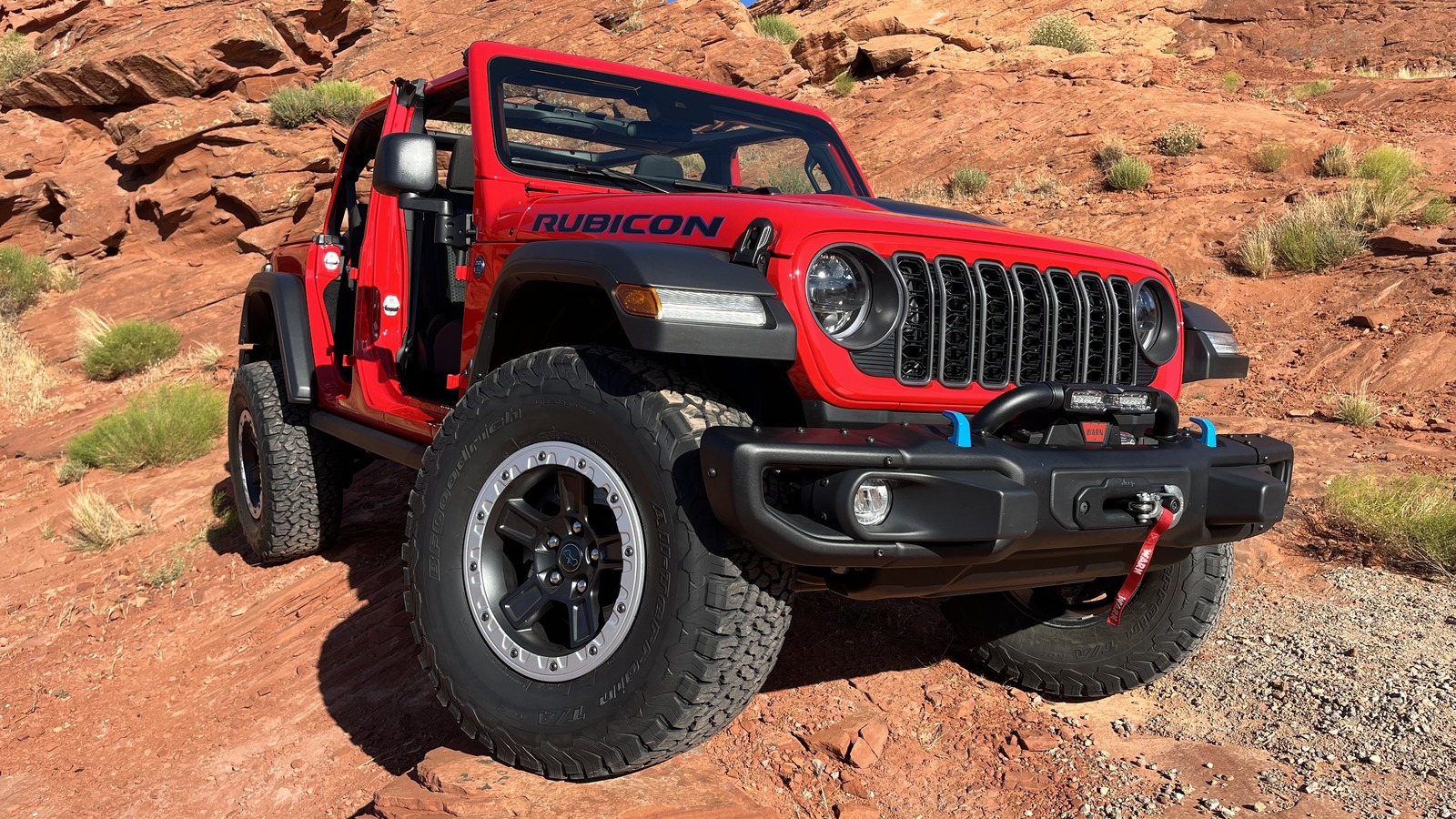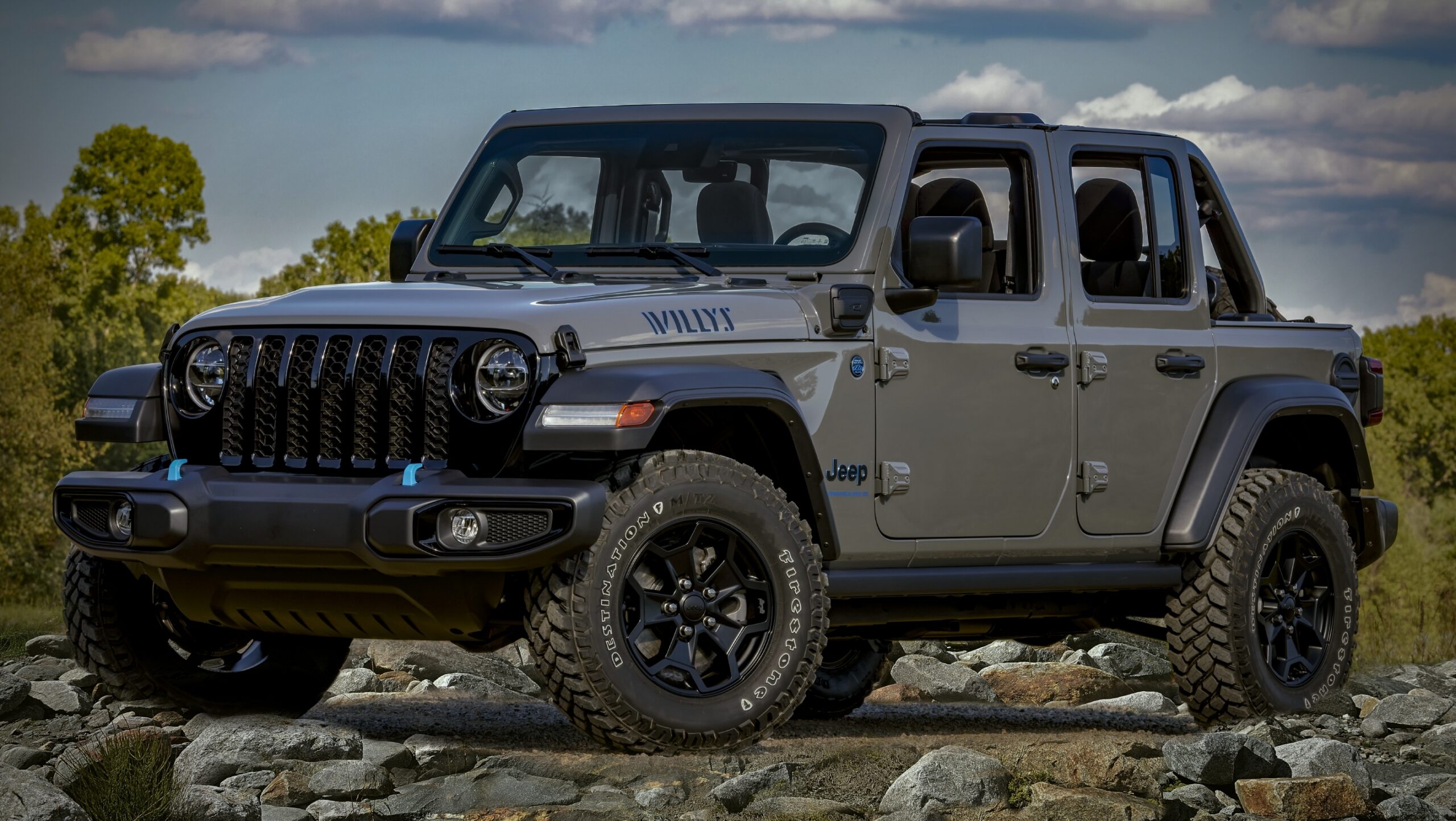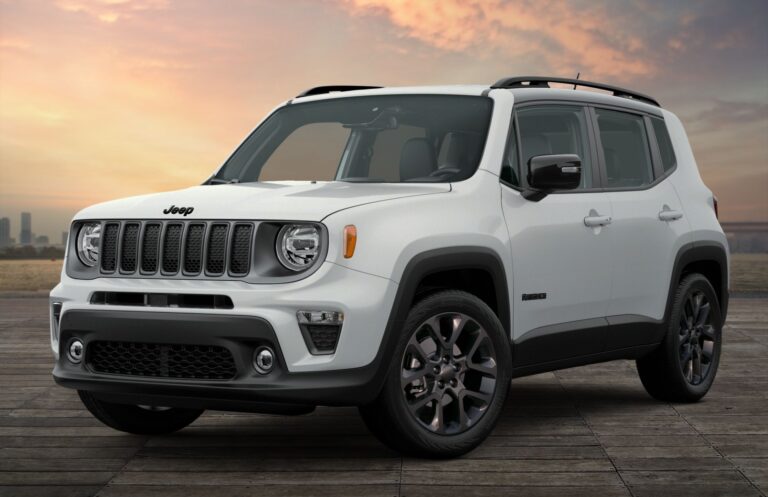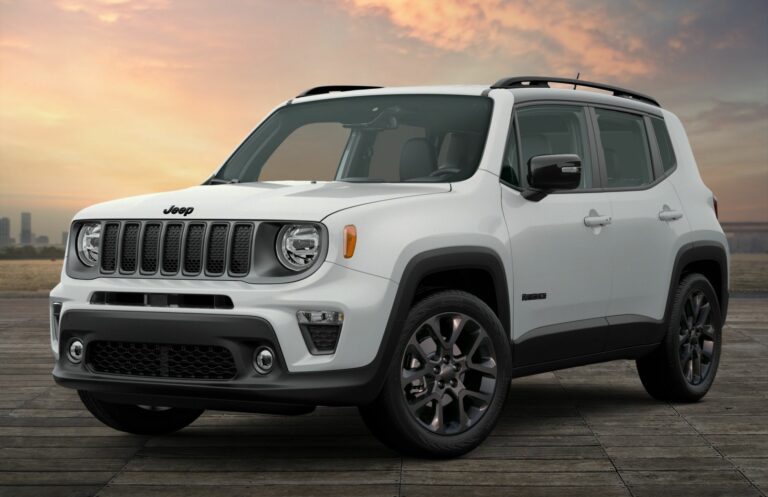Jeep Wrangler 2 Door EcoDiesel: Exploring the Myth and the Machine
Jeep Wrangler 2 Door EcoDiesel: Exploring the Myth and the Machine jeeps.truckstrend.com
The very mention of a "Jeep Wrangler 2 Door EcoDiesel" conjures images of the ultimate off-road machine: the classic agility of the short-wheelbase Wrangler paired with the immense torque and surprising efficiency of a modern diesel engine. It’s a combination that, for many enthusiasts, represents the pinnacle of Jeep’s engineering and heritage. However, the reality of this specific configuration from the factory is a different story. While the EcoDiesel engine brought a new dimension of performance and range to the Wrangler lineup, it was exclusively offered in the four-door JL Unlimited models. This article will delve into the allure of the EcoDiesel engine, the enduring appeal of the two-door Wrangler, why the factory combination never materialized, and what a hypothetical or custom build might entail.
The Myth and the Reality: Was the 2-Door EcoDiesel Ever Made?
Jeep Wrangler 2 Door EcoDiesel: Exploring the Myth and the Machine
Let’s address the elephant in the room immediately: No, Jeep never officially produced a 2-door Wrangler JL with the EcoDiesel engine from the factory. The 3.0L EcoDiesel V6 engine was introduced as an option for the four-door Wrangler JL Unlimited starting in late 2019 (for the 2020 model year). This decision was likely influenced by several factors, including packaging constraints, weight distribution, anticipated market demand for the more family-friendly four-door, and the complexity of certifying another powertrain combination for the shorter wheelbase.
Despite its non-existence as a factory model, the concept of a 2-door EcoDiesel Wrangler remains a highly desirable "unicorn" for many, prompting discussions about custom engine swaps and "what if" scenarios. This article will explore the individual components that make this theoretical vehicle so compelling.
The EcoDiesel Engine: A Deep Dive into Power, Torque, and Efficiency
The heart of the EcoDiesel appeal lies in its sophisticated 3.0-liter V6 engine, an option that transformed the driving experience for the 4-door Wrangler JL Unlimited.
-
Engine Specifications:
- Displacement: 3.0 Liters (2,987 cc)
- Configuration: V6, DOHC (Dual Overhead Camshaft)
- Horsepower: 260 hp at 3,600 rpm
- Torque: 442 lb-ft at 1,400 rpm
- Transmission: TorqueFlite 8HP75 eight-speed automatic
- Emissions System: Selective Catalytic Reduction (SCR) with Diesel Exhaust Fluid (DEF) and Diesel Particulate Filter (DPF).

-
The Torque Advantage: The standout feature of the EcoDiesel is its immense low-end torque. All 442 lb-ft are available at just 1,400 rpm, which is crucial for off-roading. This low-revving power allows the vehicle to crawl over obstacles with minimal throttle input, reducing wheel spin and providing precise control. It significantly enhances rock crawling, navigating steep inclines, and pulling through thick mud or sand.

-
Improved Fuel Economy: Compared to its gasoline counterparts (2.0L Turbo and 3.6L Pentastar V6), the EcoDiesel offers significantly better fuel economy, especially on the highway. For the 4-door Wrangler Unlimited, EPA estimates typically ranged around 22 MPG city / 29 MPG highway / 25 MPG combined. This extended range makes it an excellent choice for overlanding and long-distance adventures where fuel stops might be sparse.
-
On-Road Refinement: While still a Wrangler, the EcoDiesel provides a surprisingly refined on-road experience. The engine is relatively quiet for a diesel, and the 8-speed automatic transmission is smooth and efficient, keeping the engine in its optimal power band. The added low-end torque also makes for effortless acceleration and highway passing.
The 2-Door Wrangler JL: Agility, Heritage, and Unmatched Maneuverability
The 2-door Wrangler is the quintessential Jeep, embodying decades of heritage and rugged capability. Its short wheelbase is its defining characteristic, offering distinct advantages, especially in challenging off-road scenarios.
-
Unmatched Agility: The shorter wheelbase (96.8 inches for the JL 2-door) results in superior breakover angles and a tighter turning radius. This makes the 2-door incredibly nimble on narrow trails, through dense forests, and over obstacles like fallen logs or large rocks. It can navigate terrain that would leave longer vehicles high-centered or unable to make a turn.
-
Classic Appeal: For many purists, the 2-door Wrangler is the "real" Jeep. Its proportions, removable doors, and fold-down windshield hark back to the original Willys MB, embodying the spirit of open-air adventure and simplicity.
-
Lighter Weight: Generally, the 2-door is lighter than its 4-door counterpart, which can translate to slightly better performance and less strain on components, especially when heavily loaded for off-roading.
-
Simplicity and Compactness: The 2-door’s smaller footprint makes it easier to park in urban environments and more manageable on tight parking lots, despite its off-road prowess.
Why the Combination Was Desired (and Why It Wasn’t Offered)
The theoretical combination of the EcoDiesel engine with the 2-door Wrangler’s short wheelbase is compelling because it marries the best attributes of both:
- Ultimate Rock Crawling: The short wheelbase for superior breakover and tight turns, combined with the low-end torque of the EcoDiesel for controlled, powerful crawling.
- Extended Range in a Compact Package: Great fuel economy for long trips, but in a vehicle that’s easier to maneuver on trails and park.
So, why didn’t Jeep offer it?
- Packaging Challenges: The EcoDiesel engine, with its associated exhaust aftertreatment systems (DEF tank, DPF, SCR catalyst), requires significant underbody space. Integrating all these components into the shorter 2-door chassis without compromising ground clearance or fuel tank capacity would have been a considerable engineering challenge.
- Weight Distribution: The diesel engine is heavier than the gasoline options. Placing this weight in the front of a short-wheelbase vehicle could negatively impact weight distribution, potentially affecting handling and off-road balance, especially when climbing steep grades.
- Market Demand vs. Cost: Jeep likely analyzed the market and concluded that the demand for a premium-priced 2-door EcoDiesel variant wouldn’t justify the development and certification costs. The 4-door Unlimited dominates Wrangler sales, making it the logical platform for new powertrain options.
- Emissions Certification: Certifying an engine for a new vehicle configuration is an expensive and time-consuming process. Limiting the EcoDiesel to the 4-door streamlined this process.
The Custom Build Option: Realizing the Dream (Hypothetically)
For enthusiasts determined to have a 2-door EcoDiesel Wrangler, an engine swap is the only path. This is a complex, costly, and time-consuming undertaking that should only be attempted by experienced mechanics or specialized shops.
- Donor Vehicle/Engine: You’d need a 2-door JL Wrangler and a donor EcoDiesel engine, typically sourced from a wrecked 4-door JL or Gladiator.
- Integration Challenges:
- Engine Mounts: Custom engine mounts would likely be required.
- Transmission: The EcoDiesel’s 8HP75 automatic transmission is robust and well-matched but needs to be integrated with the 2-door’s transfer case.
- Wiring and ECU: This is often the most challenging part. The engine’s Electronic Control Unit (ECU) needs to communicate seamlessly with the Wrangler’s body control modules (BCM) and other systems. Custom wiring harnesses and programming are essential.
- Fuel System: Diesel fuel lines, a larger fuel filter, and a DEF tank and associated plumbing need to be installed.
- Exhaust and Emissions: The DPF and SCR systems must be integrated. Modifying or deleting these for off-road use is illegal for street use and comes with significant environmental and legal risks.
- Cooling System: The diesel engine requires a robust cooling system, potentially necessitating larger radiators or intercoolers.
- Weight Management: Suspension upgrades might be needed to handle the increased weight of the diesel engine.
- Legalities: Emissions regulations vary by state/country. Ensuring the swapped vehicle remains street-legal and passes inspection is critical. This often means retaining all factory emissions equipment.
A custom build is not for the faint of heart or light of wallet, but it is technically feasible for those with the resources and determination.
Important Considerations for a Hypothetical or Swapped 2-Door EcoDiesel
If one were to undertake or even just dream about owning a 2-door EcoDiesel, several factors are paramount:
- Initial Cost: A custom swap will add tens of thousands of dollars to the purchase price of a 2-door Wrangler.
- Maintenance Complexity and Cost: Diesel engines have specific maintenance requirements (DEF refills, fuel filter changes, specific oil types) that can be more costly than gasoline engines. For a swapped vehicle, finding mechanics familiar with the setup might be challenging.
- Fuel Availability: While diesel is widely available, some remote areas might have limited access, and quality can vary.
- Resale Value: A custom-swapped vehicle might have a niche appeal but could be harder to sell to the average buyer due to its non-factory configuration and potential for warranty issues.
- Warranty: Any factory warranty on the 2-door Wrangler would be voided by an engine swap.
Estimated Cost for a Hypothetical Custom Build (Jeep Wrangler 2 Door EcoDiesel)
As established, the Jeep Wrangler 2 Door EcoDiesel was not a factory offering. Therefore, a price table for a new, off-the-lot model is impossible. However, we can estimate the cost of a hypothetical custom build for those adventurous enough to pursue this dream.
This table provides a rough estimate and can vary wildly based on the condition of the donor parts, labor rates, and the complexity of the chosen shop.
| Component / Service | Estimated Cost Range (USD) | Notes |
|---|---|---|
| Donor Vehicle (2-Door JL) | $30,000 – $60,000+ | Depending on trim (Sport, Sahara, Rubicon), model year, and condition. Purchase a vehicle without major frame damage. |
| Donor EcoDiesel Engine | $8,000 – $15,000+ | Sourced from a wrecked 4-door JL Unlimited or Gladiator. Price depends on mileage, condition, and inclusion of transmission/accessories. |
| Donor 8HP75 Transmission | $2,000 – $5,000+ | Often comes with the engine, but sometimes needs to be sourced separately. |
| Custom Engine Mounts | $500 – $1,500 | Fabrication and installation. |
| Wiring Harness & ECU Work | $5,000 – $15,000+ | This is highly specialized and critical. Includes CANBUS integration, ECU flashing/programming. Can be the most expensive and challenging part. |
| Custom Exhaust System | $1,500 – $4,000+ | Integration of DPF, SCR, and routing for the shorter wheelbase. Includes DEF tank integration. |
| Cooling System Upgrades | $1,000 – $3,000 | Larger radiator, intercooler, fans if needed for optimal diesel operation. |
| Fuel System Modifications | $500 – $1,500 | Diesel-specific fuel lines, filter, pump if necessary. |
| Suspension Upgrades | $1,000 – $5,000+ | To compensate for the added weight of the diesel engine and achieve desired lift/performance. Highly recommended. |
| Professional Labor | $10,000 – $30,000+ | Highly variable. Depends on shop rates, complexity, and unforeseen issues. This is for a full, professional swap. |
| Miscellaneous Parts/Fluids | $1,000 – $3,000+ | Hoses, clamps, sensors, oils, DEF, etc. |
| Contingency (10-20%) | $5,000 – $15,000+ | Essential for unexpected problems, which are common in custom builds. |
| Total Estimated Cost | $61,500 – $158,000+ | This is the total cost for the vehicle plus the complete custom EcoDiesel swap. This figure can easily exceed the price of a brand-new, top-trim 4-door JL EcoDiesel. |
Frequently Asked Questions (FAQ) about the Jeep Wrangler 2 Door EcoDiesel
Q1: Was the Jeep Wrangler 2 Door EcoDiesel ever produced by the factory?
A1: No, the Jeep Wrangler JL with the 3.0L EcoDiesel engine was exclusively offered in the four-door Unlimited models (both Wrangler and Gladiator).
Q2: Why didn’t Jeep offer the EcoDiesel in the 2-door Wrangler?
A2: Likely due to a combination of factors including packaging constraints for the diesel engine and its emissions systems within the shorter 2-door chassis, weight distribution concerns, development and certification costs, and anticipated market demand favoring the 4-door Unlimited.
Q3: Can I put an EcoDiesel engine in a 2-door Wrangler JL?
A3: Yes, it is technically possible through a custom engine swap. However, it’s a complex and expensive undertaking requiring specialized knowledge, custom fabrication, and extensive wiring/ECU integration. It will also void your factory warranty.
Q4: What are the main benefits of the EcoDiesel engine for a Wrangler?
A4: The primary benefits are its immense low-end torque (442 lb-ft at 1,400 rpm), which significantly enhances off-road capability (especially rock crawling), and improved fuel economy/range compared to gasoline engines.
Q5: What are the advantages of the 2-door Wrangler platform?
A5: The 2-door Wrangler offers superior agility due to its shorter wheelbase, resulting in better breakover angles and a tighter turning radius. It’s also lighter, more compact, and retains the classic, iconic Jeep aesthetic.
Q6: What are the challenges of owning a diesel Wrangler?
A6: Diesel Wranglers require Diesel Exhaust Fluid (DEF) refills, specific fuel filters, and often more expensive oil changes. The initial cost premium for the diesel engine is also higher, and the emissions systems (DPF/SCR) can require specific care. For a custom swap, finding qualified mechanics and ensuring legal compliance are additional hurdles.
Q7: What kind of fuel economy does the EcoDiesel get (in the 4-door Wrangler)?
A7: For the 4-door Wrangler Unlimited, EPA estimates were typically around 22 MPG city, 29 MPG highway, and 25 MPG combined, making it the most fuel-efficient powertrain option for the JL.
Conclusion: A Dream Unfulfilled, Yet a Potent Concept
The Jeep Wrangler 2 Door EcoDiesel remains a tantalizing "what if" for many enthusiasts. While never a factory reality, the allure of combining the agile, classic 2-door Wrangler with the powerful, efficient EcoDiesel engine is undeniable. It represents a hypothetical ultimate off-road machine, capable of conquering the toughest trails with ease and traversing vast distances on a single tank.
For now, the dream of a 2-door EcoDiesel lives on in the realm of custom builds and spirited debate among Jeep enthusiasts. It serves as a testament to the enduring appeal of the Wrangler’s core design and the constant desire among its owners to push the boundaries of capability and efficiency. While Jeep may have chosen a different path, the individual strengths of the EcoDiesel engine and the 2-door Wrangler platform continue to define excellence in their respective domains.




